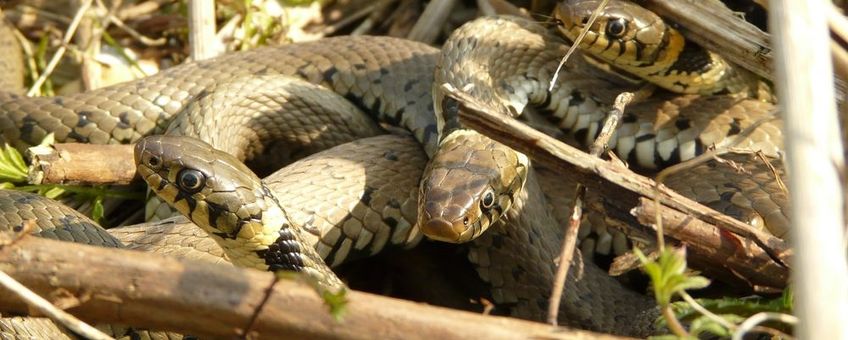
Artificial refuges for hibernating grass snakes in dykes
RAVONOverwintering in the rubble
For decades, it has been known that the Grass Snake (Natrix natrix) hibernates in large numbers in the dykes bordering the Markermeer lake. However, until recently, we did not know what sort of environment the snakes were looking for in which to spend the winter. During a dyke inspection, we discovered that the places where the snakes hibernate consist of coarse debris just beneath the basalt facing of the dyke; the crevices and cracks in the rubble seem to be ideal for overwintering.
During maintenance, these "natural" hibernation spots were left practically untouched, apart from putting the basalt blocks in place again. Additional opportunity for overwintering was created at five more places by applying a thick layer of coarse rubble beneath the facing. The cracks and gaps between the basalt blocks were not filled up with pebbles or gravel as is usually the case, but left open. In this way, the rubble layer remains accessible for the snakes. In addition, these small spaces also offer shelter for other animals, such as mice and amphibians.

Artificial refuges
Apart from creating additional opportunity for overwintering in the rubble layer, four artificial hibernation chambers were placed just below the surface of the dyke embankment. They are fitted with sensors that measure the temperature and humidity. In coming winters, they will be inspected to see if the Grass Snake is making use of this new type of hibernation residence.

If the artificial refuges prove effective, they can be introduced during the major dyke improvement that is planned for other dykes in the area. Moreover, depending on the results of monitoring, some may also be put into place by the Hoogheemraadschap (Water Board) Hollands Noorderkwartier when carrying out improvements on the dykes along the western coast of the IJmeer and Markermeer as far as the small town of Monnickendam. These dykes are home to many Grass Snakes.
Text: Ingo Janssen, RAVON
Photos: Martine van Oostveen (lead photo: in the spring, the smaller males wake up a few weeks earlier than the females to get ready for mating. These males are on the lookout for the first female to awake from hibernation); Ingo Janssen
